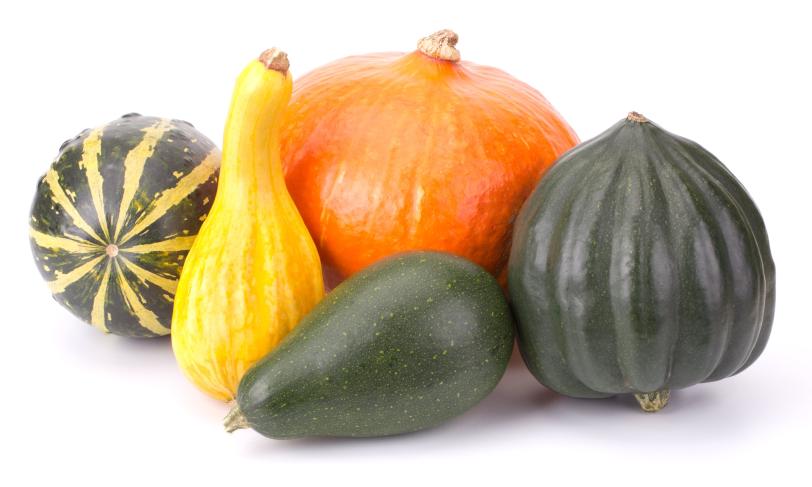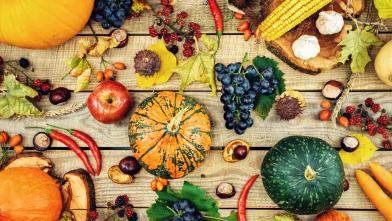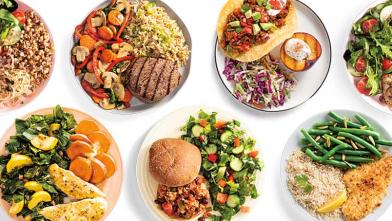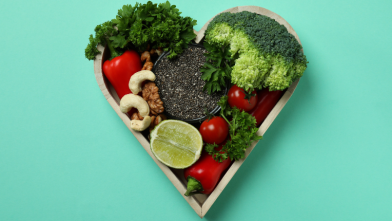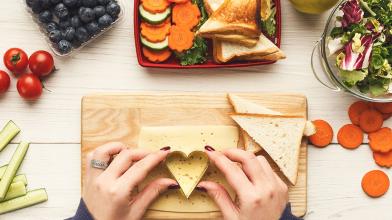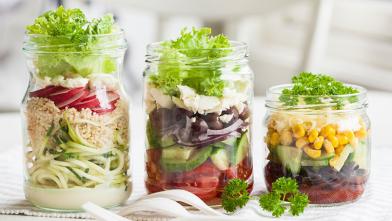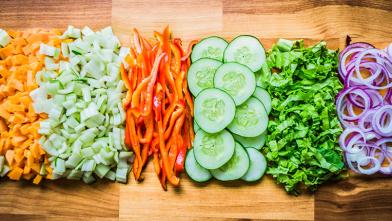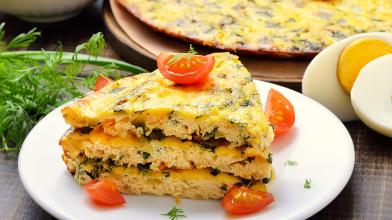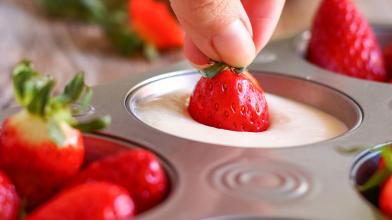During the fall season, there is a wide variety of winter squashes that can be used on your menu. These squashes can make meal prep easy with a three-step process for cooking them—wash, bake, cool. Let the prep for these seasonal quality carbs give you ideas for nutritious, fall-themed dishes for you and your loved ones to enjoy.
Spaghetti Squash Pasta
Unlike other winter squash, the flesh of spaghetti squash is stringy and fibrous, making it look like spaghetti noodles. This makes it a great low-carb substitute for pasta in your favorite spaghetti recipes.
How to roast spaghetti squash:
- Preheat oven to 375 degrees F.
- Pierce the spaghetti squash several times all over with a knife or fork (piercing the skin allows steam to escape while roasting and prevents a squash explosion).
- Place the squash directly on the oven rack (you might want to place a baking sheet or foil on the rack below to catch any juices that may drip out during roasting). Bake for 1 to 1 1/2 hours (total time will depend on the size of the squash). Rotate at least once during cooking. The squash is done when a sharp knife can be easily inserted and removed.
- Remove from the oven and cool. When the squash is cool enough to handle, cut in half lengthwise. Scoop out the seeds with a large spoon or ice cream scoop. Scrape the stringy flesh out of the skin using a fork.
One medium spaghetti squash (two to three pounds) will make four to six one-cup servings. Toss with your favorite pasta sauce or let your inner chef shine and check out this Spaghetti Squash with Pine Nuts and Sage.
DIY Pumpkin Purée
Everybody loves pumpkin flavored things in the fall, but have you ever cooked with a real pumpkin from scratch? It’s no different than cooking with any other winter squash. An easy recipe to make with a baked pumpkin is pumpkin purée.
NOTE: You can’t cook with just any pumpkin—look for pumpkins that are labeled as “baking,” “sugar,” or “pie” pumpkins. They are much smaller than the kinds of pumpkins you buy for carving. You can find them in the produce section of your grocery store.
How to make pumpkin purée:
- Break the stem off the pumpkin and cut the pumpkin in half from top to bottom. Scoop out the seeds and discard or save for roasting.
- Line a baking sheet with foil or parchment paper. Lay the pumpkin halves cut side down on the baking sheet and place in the oven along with the spaghetti squash (see temperatures and cooking instructions above). The pumpkin will take about one hour to roast. The flesh will be very soft and fall off the skin when done.
- Remove the pumpkins from the oven and cool. When the pumpkin is cool enough to handle, scoop the flesh out of the skin and purée in a blender, food processor, or potato ricer. Or, for a chunkier texture, mash by hand with a fork or potato masher.
One pumpkin will make about two cups of purée. You can store puréed pumpkin in the fridge for three to five days or in the freezer for up to six months. You can use this purée in any recipe that calls for canned pumpkin purée. Try one of these recipes, where your homemade purée will really shine:
- Crab, Kale, & Ricotta Lasagna Rolls with Parmesan Pumpkin Sauce
- Creamy Pumpkin Pasta
- Pumpkin-Banana Muffins
Butternut Squash
Butternut squash is a starchy vegetable that can be the quality carbohydrate section part of the Diabetes Plate. A one-cup serving of cooked squash has 15 grams of carbohydrate and 3 grams of fiber. It can be baked, roasted, or cooked in a slow cooker.
How to slow-cook butternut squash:
- Wash whole uncut butternut squash and place in slow cooker.
- Cover and cook on high for 4–5 hours or low 6–8 hours.
- When cool enough to handle, cut in half and scoop out the seeds. Next, scoop out the squash flesh for use in your favorite recipe or store in the fridge or freezer.
Roasted Squash Seeds
You’ve probably heard of roasted pumpkin seeds, but you can roast and eat seeds from any winter squash! Save the seeds from the pumpkin and spaghetti squash to make a crunchy, nutritious snack. Simply clean off the seeds, pat them dry, and toss them with some olive oil and your favorite seasonings. Spread them out in a single layer on a baking sheet and bake at 300 degrees F for 20–25 minutes or until they are just starting to brown.
Get Even More
Looking for a tool to help with meal planning? Create a free Diabetes Food Hub account to save recipes, plan meals, create a grocery list made for your eating plan. While you’re there, be sure to check out the rest of what Diabetes Food Hub has to offer for more fall-themed recipes you can plan and prep ahead of time.
